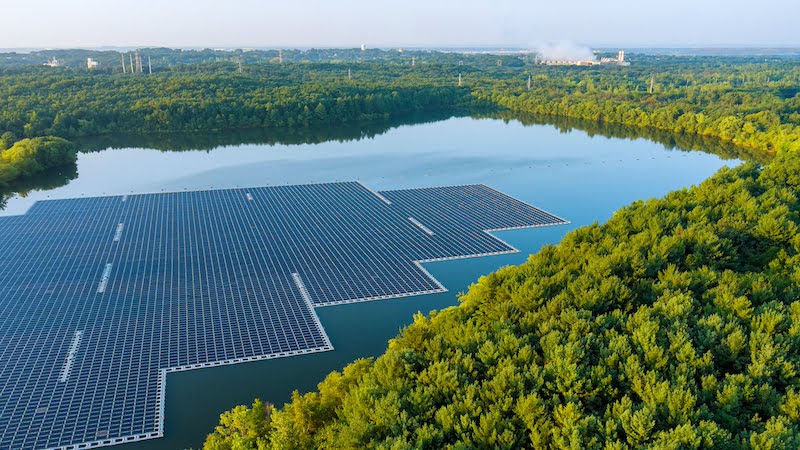
More and more households are meeting their electricity needs at least partially with solar energy. But floating solar systems on bodies of water could even supply entire countries with electricity.
The number of balcony power plants in Germany is steadily increasing. In 2023, 275,000 new balcony power plants were already put into operation – three times as many as in the previous year.
But the importance of solar systems is not only increasing on a small scale. Many countries are currently investing in floating solar systems. According to a study by Bangor University, several countries could even use these to cover their electricity needs.
Floating solar systems could supply entire countries
For their study, the researchers analyzed climate data from around one million bodies of water worldwide. The aim was to determine the global energy generation potential of these photovoltaic systems installed on bodies of water.
The researchers at Bangor University concluded that floating solar systems on these waters could generate 14,906 TWh of electricity worldwide.
A conservative coverage of ten percent of the water surface with floating solar systems would generate enough energy to “cover a significant portion of the electricity needs of some countries.” On average, the figure was 16 percent.
In addition, floating solar systems have environmental advantages over photovoltaic systems on land. This is because the water can cool the panels better. The panels can also reduce evaporation in the water.
However, according to the researchers, the overall environmental impact of floating solar systems still needs to be further researched.
These countries could meet their entire electricity needs
According to the analysis, five countries could even cover their entire electricity needs through floating solar systems. These include Ethiopia with 129 percent, as well as New Guinea and Rwanda.
For many countries in Africa, the Caribbean, South America and Central Asia, the percentage is between 40 and 70 percent. In European countries, this potential is lower. Finland, for example, has 17 percent, while Denmark has only seven percent.
Which bodies of water are suitable for floating solar systems?
The researchers have defined certain parameters for their considerations. A body of water that is suitable for floating solar systems must be located within a radius of ten kilometers from a population center.
Regions with at least 1,000 inhabitants are considered to be such a population center. The population density must not be less than 400 people per square kilometer.
The waters must not be located in a nature reserve and must not freeze for more than six months of the year. And of course the waters must not dry out either.
For their calculations, the researchers covered a maximum of ten percent of the water surface. The floating solar systems covered a maximum area of 30 square kilometers.
Also interesting:
Source: https://www.basicthinking.de/blog/2024/06/13/schwimmende-solaranlagen/


